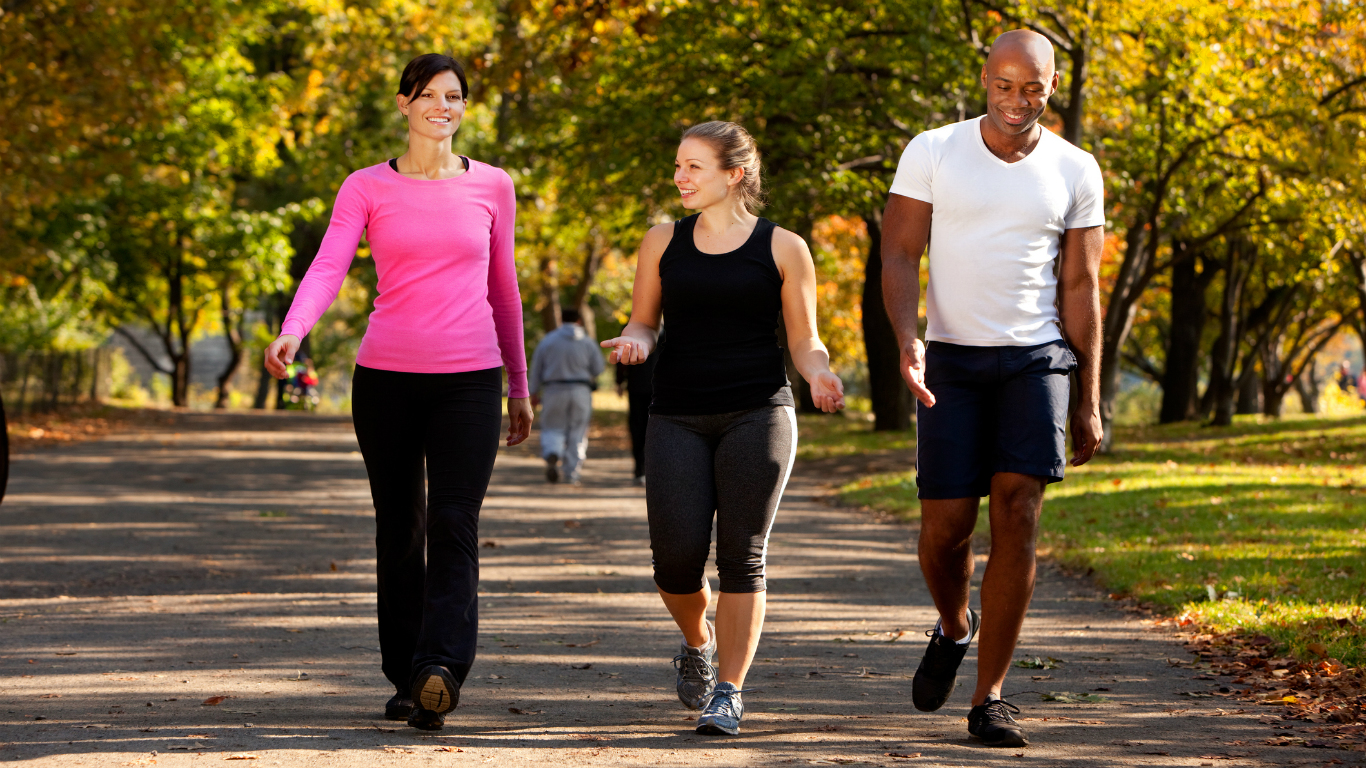
Americans are no longer under orders to stay at home. Gyms and other facilities where people can work out are have reopened in most of the country. That may encourage people who want to stay in shape or lose the so-called “Quarantine 15” because, as research has found, walking is often just as beneficial a workout.
It’s easy to forget that walking is actually an aerobic activity. After all, about 7 billion people do it every day. It’s low-impact, simple, natural, accessible, and has many health benefits.
A study from the University of Utah showed that the body may actually be made to walk. Walking is physically easier on the body, but the body still requires to take in more oxygen than in sedentary mode, providing the same benefits as running.
Not even a third of American adults exercise on a regular basis, according to the Centers for Disease Control and Prevention. Just about 23% meet the federal guidelines for aerobic activity and strength training. But people in some places are less active than others — these are he 50 laziest cities in America.
The rule of thumb is to get at least 150 minutes of moderate-intensity aerobic exercise a week, according to the 2018 Physical Activity Guidelines for Americans. Breaking the numbers down, that’s 30 minutes five days a week. This sounds like a small price to pay if you want to significantly improve both your physical and mental health.
Click her to see 30 reasons walking is the best exercise.
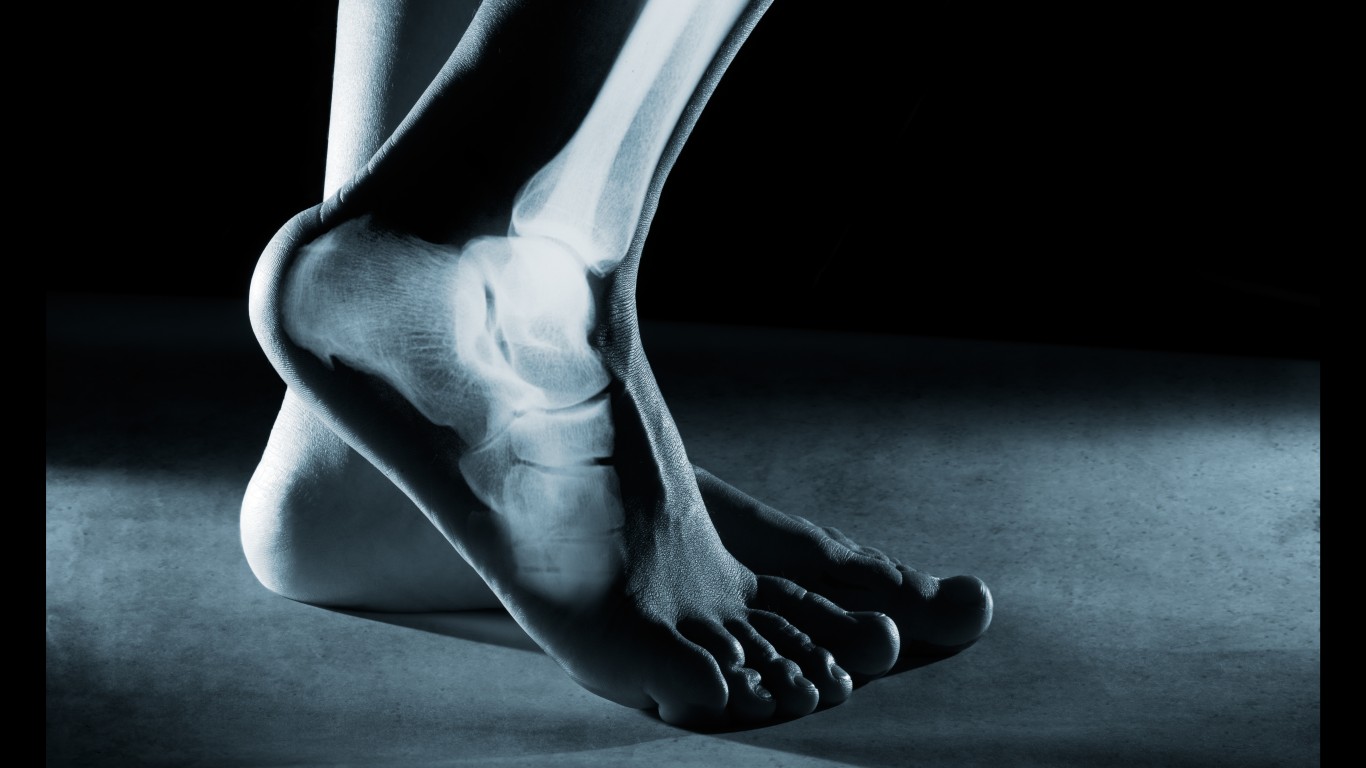
1. Stronger bones
As we age, our bones become weaker, but walking regularly can strengthen them. As we walk, we increase stress on bones — and some of the cells building the bones, called osteoblasts, respond to stress. Low-impact walking can also help prevent bone density loss. You can build even better bone mass by race walking, doing some jogging when you walk, or by adding weights such as ankle weights.
[in-text-ad]
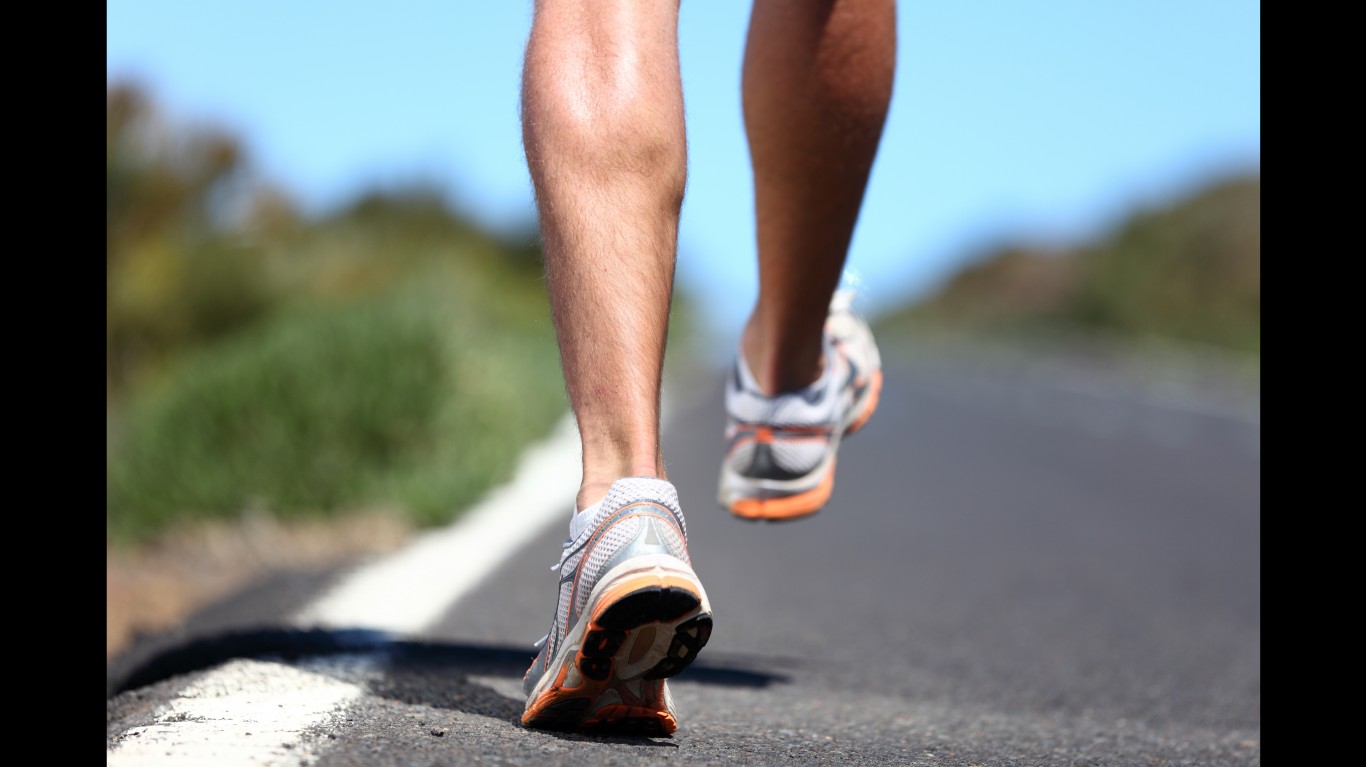
2. Increased muscle strength
Aging can reduce muscle strength. Walking can build muscle mass and tone muscles, particularly the muscles in your back and your legs.
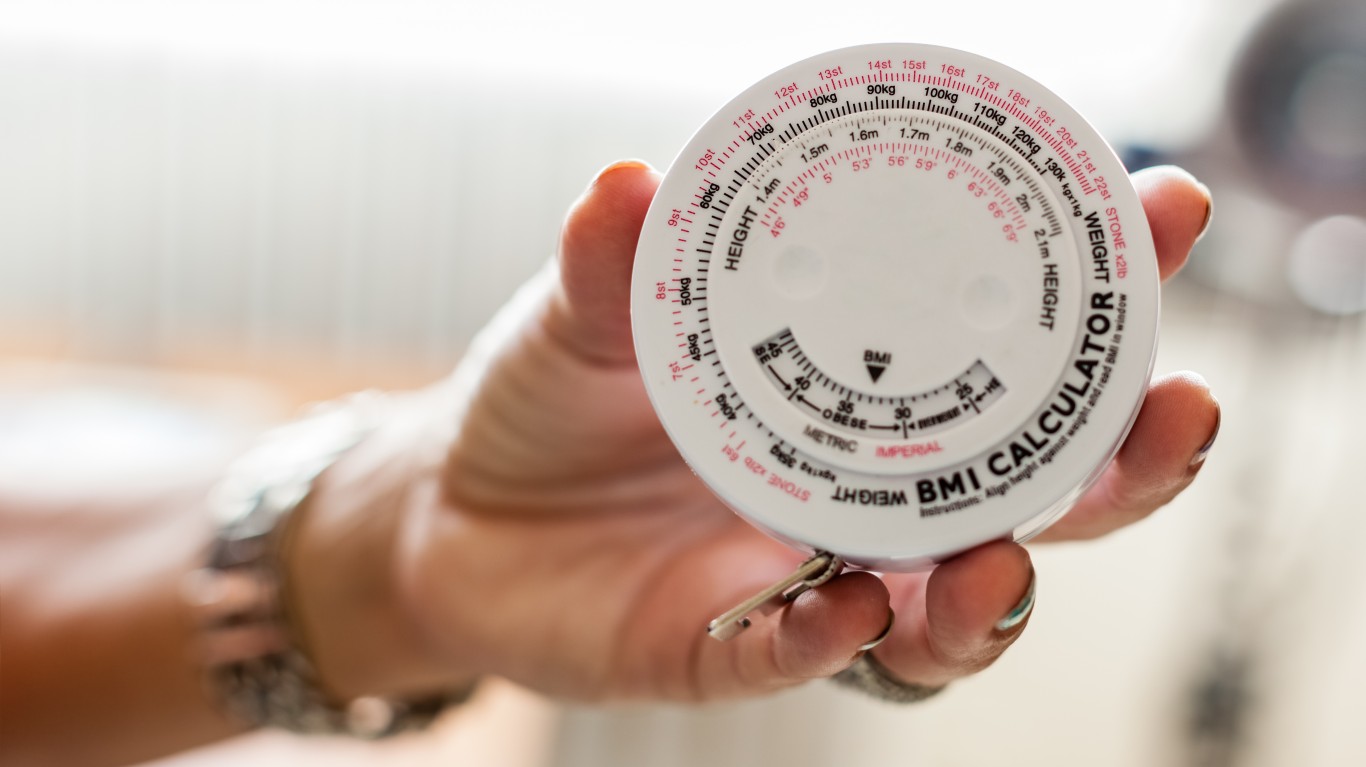
3. Less body fat
Interested in burning fat without going to the gym? Then try walking. While losing weight largely depends on your nutrition, exercise is also important. But the exercise doesn’t have to leave you exhausted. It can be as easy as walking.
A 2014 study published in the Journal of Exercise Nutrition and Biochemistry found that walking between 50 and 70 minutes just three days a week for 12 weeks resulted in an average body fat loss of 1.5% — or 1.1 inches around the waist — in obese women. Of course, picking up the pace is likely to result in even more calories burnt.

4. Better heart health
You can literally walk your way to a stronger heart. Walking is an aerobic activity, and as such, it increases heart rate and blood pressure, resulting in greater efficiency of the heart. Analysis of several studies concluded that walking reduced the risk of developing heart disease by 31%. This was true for both men and women who walked as little as 5.5 miles a week at a slow pace of 2 mph.
The general recommendation for adults is to get at least 150 minutes a week of moderate-intensity aerobic activity. Brisk-walking, which is a pace of about 2.5 mph, is an example of such activity.
[in-text-ad-2]

5. Better mood
Research has shown that more walking has a palliative effect on one’s mood. In a study on walking’s positive effects published in the National Library of Medicine National Institutes of Health in 2016, three different experiments demonstrated that even casual walking promoted positive effect. Walking “can override the effects of other emotionally relevant events such as boredom and dread,” according to the study. By walking outside, you also are exposed to sunlight, which can mitigate seasonal affective disorder

6. Better balance and coordination
As we age, our balance and coordination can decline. This occurs largely because of certain medical conditions such as arthritis and heart disease, unresolved vision problems, the effects of medications, as well as a lack of flexibility. Walking is a safe exercise that helps build up lower-body strength, which is key to good balance and coordination. Doctors suggest older people do a tightrope walk to improve balance. Tightrope walk is walking a straight line and slowly placing one foot directly in front of the other while keeping your head straight.
[in-text-ad]
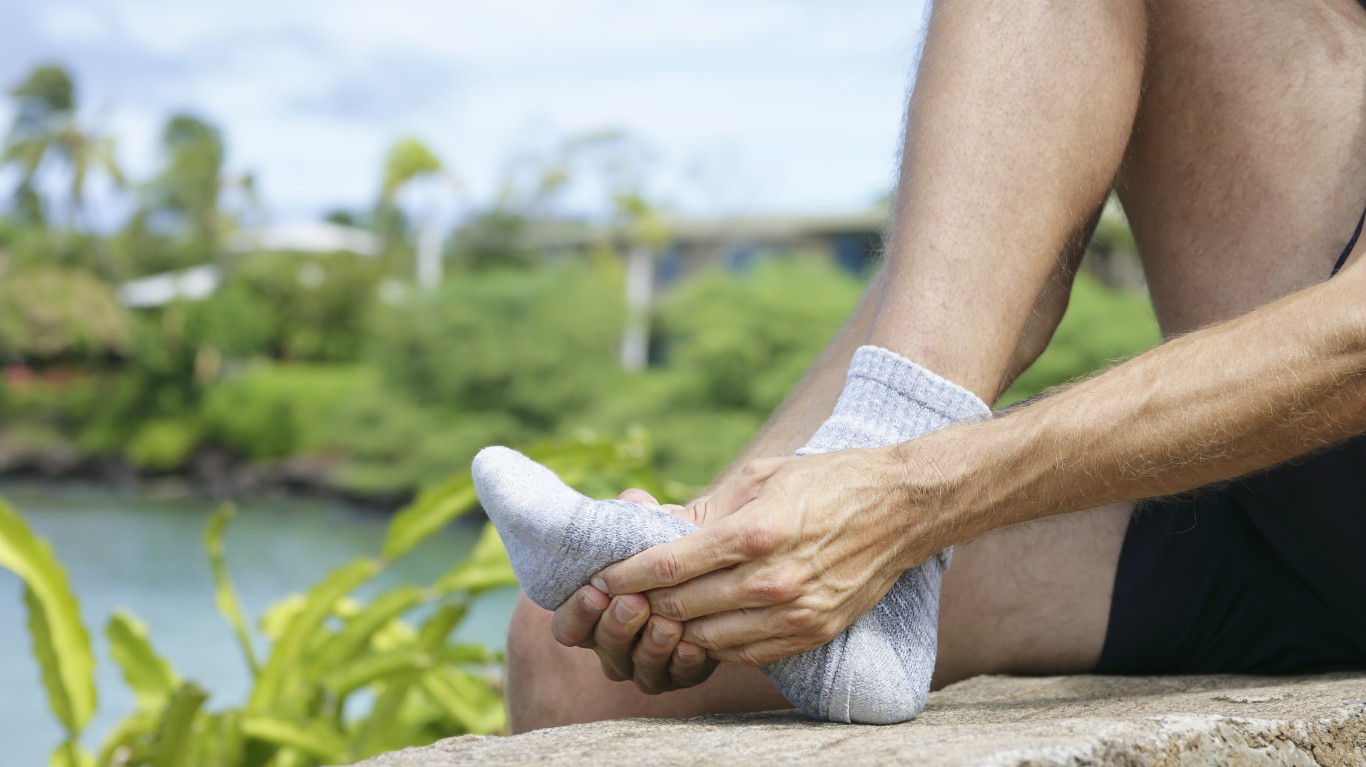
7. Better circulation
It’s important, at any age, to maintain healthy blood flow. When the blood circulation is poor, muscles and tissues in the body don’t get enough oxygen and nutrients from the blood to function properly, leading to general fatigue and pain. Walking helps improve blood flow because, as you walk, you take in more oxygen, which is then moved to your muscles. This gets your heart rate up, which improves cardiovascular health, which is, of course, crucial for proper circulation.

8. Helps fight and prevent depression
The physical benefits of exercising have been demonstrated by dozens of studies. More research is focusing on how aerobic activity benefits mental health. Moderate-intensity exercises, including walking, have also been shown to prevent depression, according to a study published in JAMA Psychiatry.
Exercise is also very helpful in decreasing depressive symptoms. Some data suggest that the focus should actually be on how often a person engages in physical activity rather than on how intense the workout is.

9. Increases alertness
Walking improves mental acuity because the aerobic exercise pumps more oxygen to the brain. It also releases chemicals such as adrenaline that boost alertness. Several studies indicate that 20 to 30 minutes of exercise before performing a mental task sharpens reaction time and improves decision making. A Stanford University study found that “walking opens up the free flow of ideas, and it is a simple and robust solution to the goals of increasing creativity and increasing physical activity.”
[in-text-ad-2]

10. Curb stress eating
Stress eating, also known as emotional eating, is consuming food in response to feeling certain emotions. It’s probably the reason many weight loss goals fail. Stress releases hormones that make you reach out for comfort foods. Walking may be able to take care of the problem. Just 15 minutes of brisk walking has been shown to curb cravings for sugary snacks in some overweight people.

11. Improves sleep
You’ll sleep better after you’ve walked. That’s because walking naturally releases levels of melatonin, the hormone that helps you sleep. A sleep study published in Oxford Academic last month found that postmenopausal women who walked or did some kind of exercise before they went to bed had better sleep quality than sedentary women.
[in-text-ad]

12. Reduces stress
Walking lowers stress by increasing blood flow and bringing oxygen and nutrients to muscles and reduce tension. Walking helps reduce stress hormone production. A University of Missouri study found that higher-intensity walking reduces stress more than lower-intensity walking. The researchers suggest people add a higher-intensity walking interval to their routine as a more effective way to lower stress.
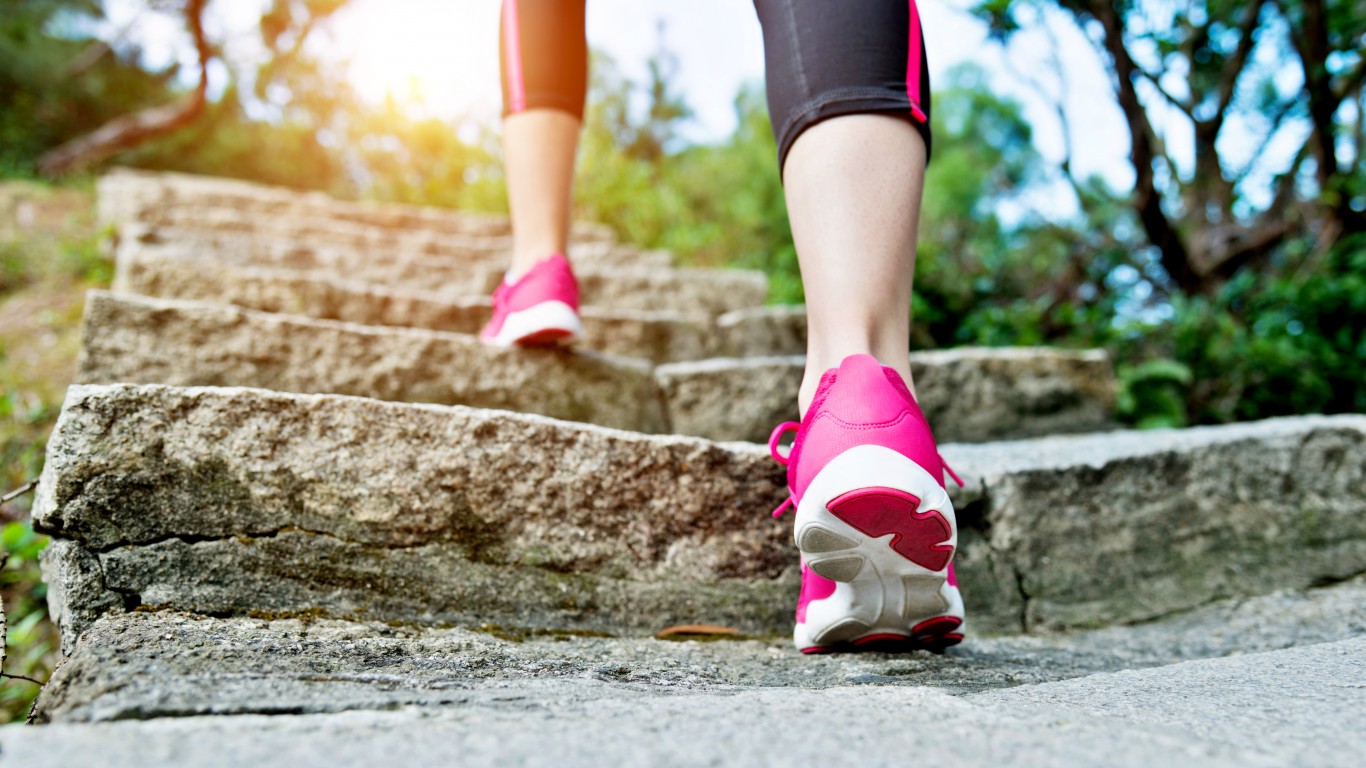
13. Builds stamina
More frequent walking builds stamina and endurance. Improved stamina means you will burn off calories more efficiently, and that will help keep off the weight. A person who walks frequently and weighs 150 pounds can burn off 100 calories per mile through long distance walking.
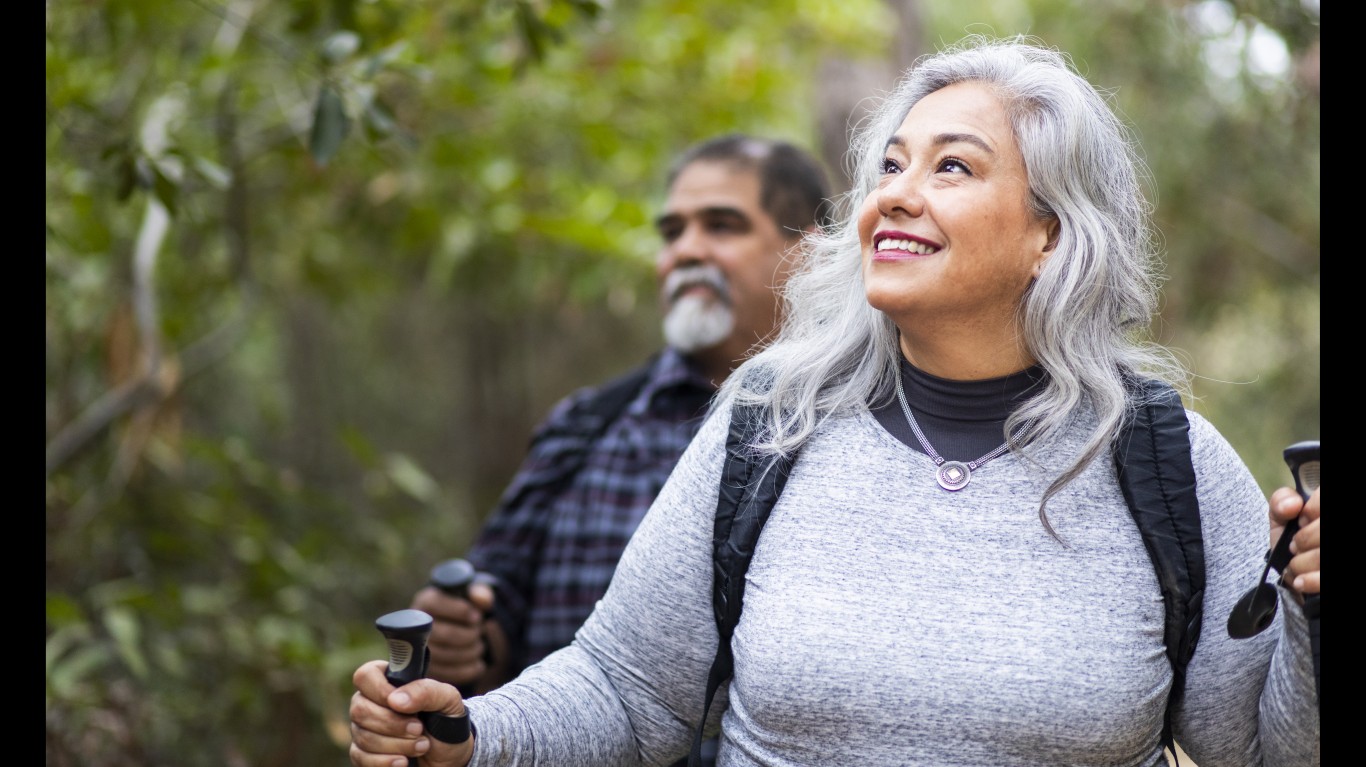
14. Increases longevity
To live longer, try a low-impact, low-cost, and accessible physical activity such as walking. Getting between three and five times the recommended amount of exercise, which translates to walking about an hour a day, may contribute to living longer, according to researchers from the National Cancer Institute and the American Cancer Society.
Regular walking has also been linked to lower mortality rates among older physically capable men as well as among adults with diabetes.
[in-text-ad-2]
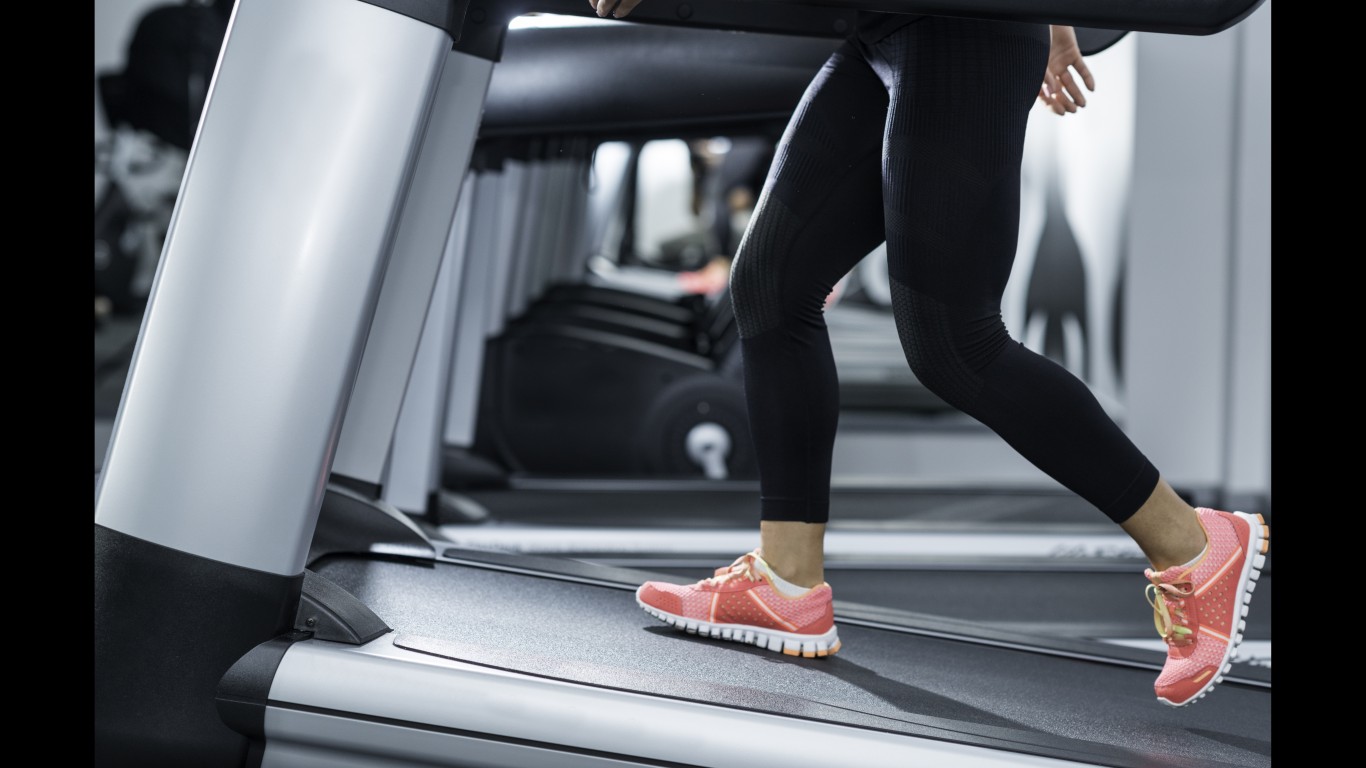
15. Tones body
Walking can strengthen and shape your legs, as well as tone your calves, quads, hamstrings, and lift your glutes. To improve body tone further, try walking on a hill or inclining your treadmill. Walking speed and greater resistance will put more stress on the hamstrings and glutes.

16. Boosts immune system
Want to keep away colds and the flu? Walking is a tonic for boosting your immune system. According to a study by Appalachian State University in North Carolina, a brisk walk for about 30 to 45 minutes a day can increase the number of immune system cells in your body. Dr. David Nieman of the university, who conducted the research, has studied the effects of exercise, diet, weight, gender, and education levels on people’s health at the university. In his findings he said that “regular aerobic exercise, five or more days per week for more than 20 minutes a day, rises above all other lifestyle factors in lowering sick days during the winter and fall cold seasons.”
[in-text-ad]
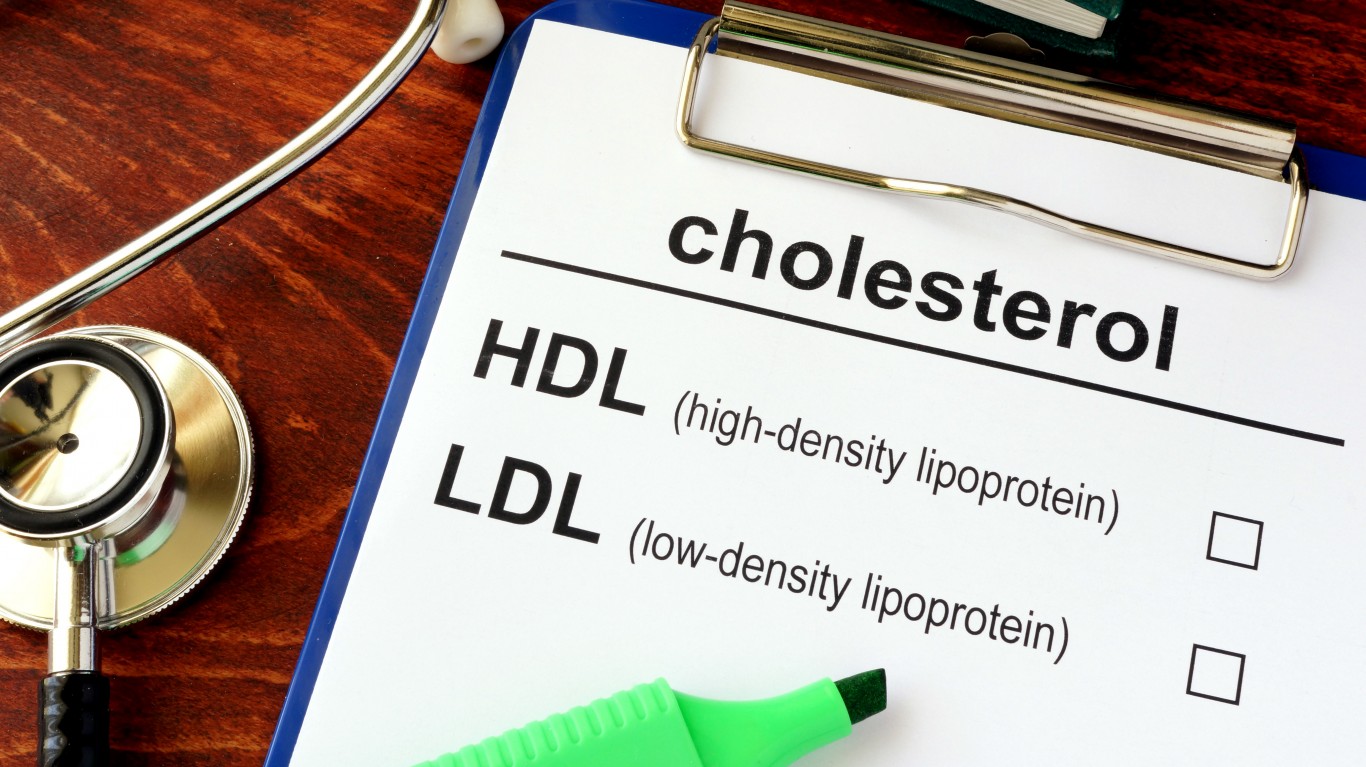
17. Lowers bad cholesterol
Commonly known as “bad” cholesterol, LDL stands for low-density lipoproteins. LDL is “bad” because high levels of it can lead to plaque buildup in the arteries, increasing the risk of heart disease.
How exactly walking lowers “bad” cholesterol is not entirely clear, but many experts think the connection is simple — exercise, walking included, helps a person lose weight, which helps lower cholesterol. Losing just 5% of body weight can result in a significantly lower LDL levels.

18. Lowers the risk for cancer
Walking every day can help lower the risk of developing certain types of cancer. A study of about 140,000 people, with an average age of 69, by the American Cancer Society found a link between walking at an average to brisk pace and lower risk of breast and colon cancers. Researchers concluded that really all levels of walking can reduce the mortality risk. Even people walking as little as two hours a week were less likely to die than those who engaged in no physical activity at all. A 2016 study published in JAMA Internal Medicine found that exercise may lower the risk of 13 types of cancer.
Walking may have an indirect effect on lowering the risk of cancer. The exercise can result in weight loss. Obesity is a major risk factor for cancer and expected to become the leading cause of the disease within just a few years, according to Prevent Cancer Foundation.

19. Helps with digestion
An old belief was that walking immediately after eating caused fatigue and stomach discomfort. According to a study published in the International Journal of General Medicine in 2011, however, walking right after eating at a brisk pace for 30 minutes leads to more weight loss than waiting for an hour after eating before walking. Blood sugar levels surge after eating, and if people start walking as soon as possible after a meal, the spike in blood sugar level will be limited.
[in-text-ad-2]

20. Prevents dementia
Taking a 20-minute walk each day could reduce the risk of developing dementia by 40%, according to a research study conducted by neurologists at the Mayo Clinic in Jacksonville, Florida. Dr. Jay Van Gerpen, who helped prepare the study, said dementia is often connected with obesity, high blood pressure, diabetes, and vascular diseases that impede the flow of blood to the brain, leading to a decline in brain tissue and memory function. Walking regularly can diminish the risk of blocked blood flow.
According to another study of dementia at the University of Pittsburgh, people who walk frequently increase the size of their hippocampus — the portion of the brain that stores new memories — by as much as 2%.

21. Increases lung capacity
When people think of exercising, they usually think of weight loss and heart health. But the lungs benefit tremendously from regular physical activity. Walking increases lung capacity and strengthens the lungs, which makes breathing easier. When you walk, or when you exercise in general, the body uses more oxygen and circulation speeds up. This increases your breathing reserve. In other words, you are less likely to be short of breath.
[in-text-ad]

22. Good for old age
Long-term regular physical activity, including walking, is associated with “significantly better cognitive function and less cognitive decline in older women,” according to a 2004 study published in the Journal of the American Medical Association. The study included nearly 19,000 women aged 70 to 81 who were assessed for cognitive decline over two years. It found that women who walked at an easy pace for at least 1.5 hours a week had higher cognitive scores than those who walked less than 40 minutes a week.

23. Increases productivity
Next time you feel stuck and need to produce a steady flow of creative thought, you may want to try walking. A 2014 Stanford study found that people who walked saw an increase of 60% in creative output compared with people who remained seated while taking a divergent thinking test. It’s worth mentioning that walking helps boost creative brainstorming, but if you need to find a single, correct answer to a problem, you should sit down and focus. In this case, walking is only a distraction, according to the study.

24. Improve fluid intelligence
Fluid intelligence is a psychology term that simply refers to a person’s ability to think logically and solve problems. According to a 2013 study conducted by researchers at Boston University School of Medicine, aerobic exercise, such as walking, improves cognition due to certain hormones that are at increased levels during exercise.
A recent Australian study found that aerobic exercise enhances fluid intelligence in people who have had a stroke if combined with cognitive training such as memory exercises.
[in-text-ad-2]

25. Reduce PMS symptoms
Every month, for a few days or a week, about 90% of women complain of premenstrual syndrome (PMS). Symptoms can range from mild, such as bloating, to severe such as debilitating headaches. Women can try walking to alleviate the pain. Some research has found that aerobic sessions, such as walking, for 60 minutes three times a week for eight weeks makes women feel much better physically, mentally, and emotionally.
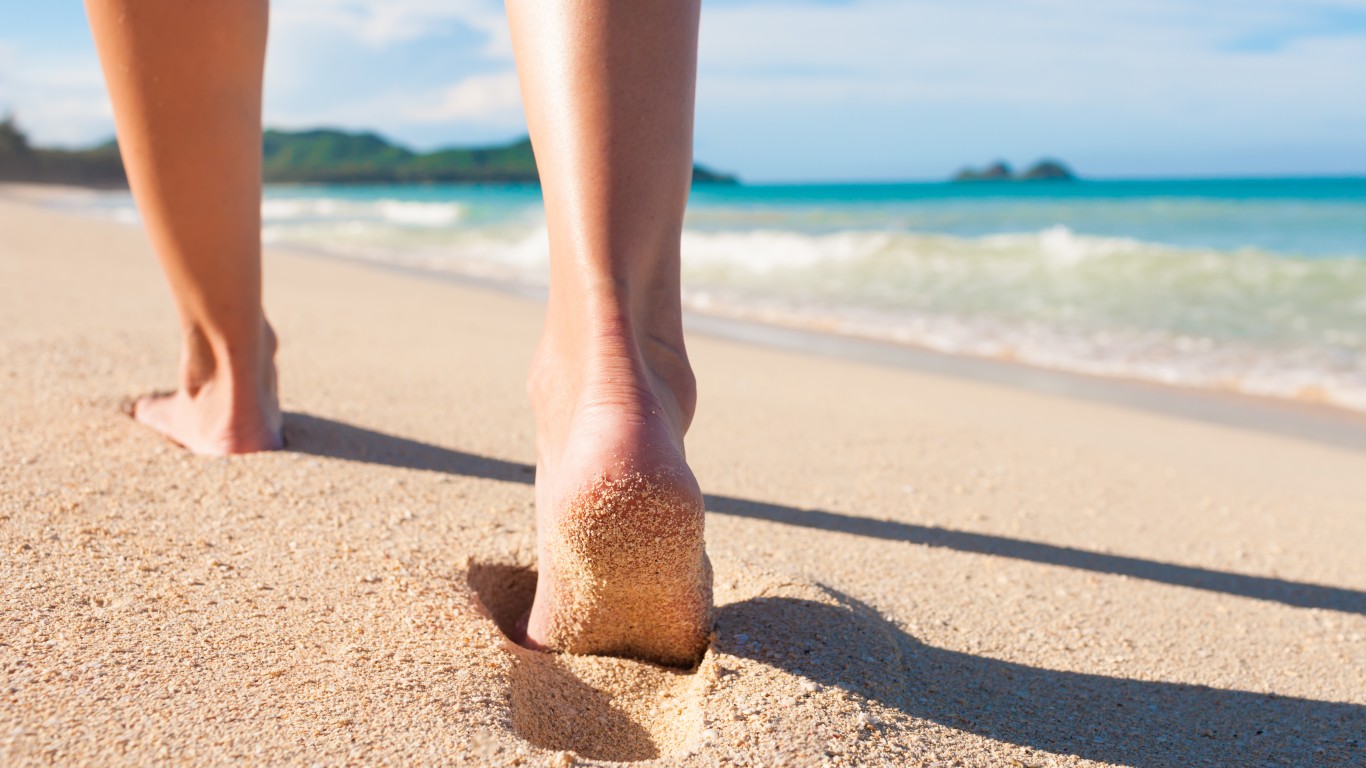
26. Exercising muscles in feet
You don’t necessarily think about good foot health when you are walking. Walking, however, is a beneficial exercise to the ligaments as well as the bones in your feet. A good exercise is walking barefoot in sand, which will stretch and strengthen the ligaments in the feet because the softness of the sand makes walking more physically stressful.
[in-text-ad]

27. Reduces acid reflux
Walking can help reduce the symptoms of acid reflux as well decrease the number of acid reflux episodes. High-impact exercise can exacerbate acid reflux, and medical experts suggest lower-impact options such as walking and light jogging.
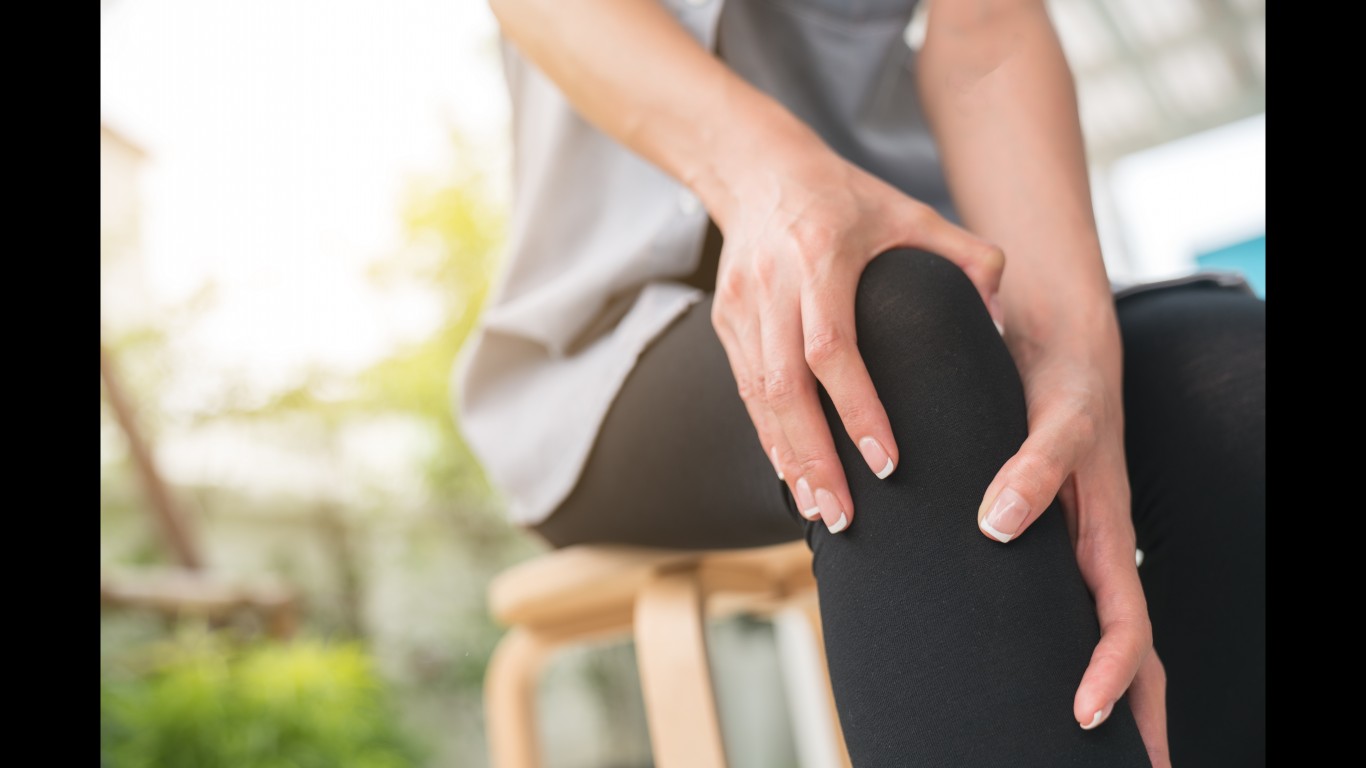
28. Reduces arthritis pain
Walking may turn out to be a medicine for painful inflammation in any joint, according to the Arthritis Foundation. Walking strengthens the muscles, which results in less pressure on the joints and thus less pain. An indirect effect may be weight loss. A healthy weight lessens stress on the joint, also alleviating pain. Walking on a regular basis releases the cartilage in knees, improving circulation, and thus removing inflammatory waste products from the joints.

29. Lowers blood pressure
There are plenty of hypertension medications out there. But some may come with side effects. A drug-free approach to lowering blood pressure may be a brisk walk a day. Some research suggests the walks should be about 40 minutes long, others between 10 and 30 minutes. Regular exercise makes the heart stronger, and a stronger heart pumps blood with less effort. As a result, the force in your arteries decreases, lowering blood pressure.
[in-text-ad-2]

30. More regular bathroom visits
Another benefit of frequent walking is regular trips to the bathroom. This is because research found that walking helps accelerate digestion and leads to more regular removal of waste. More sedentary people tend to have slower digestive systems. Bowels slow down and stool becomes hard, making it difficult to pass. This can lead to constipation. Aerobic exercise stimulates breathing and heart rate, helping the natural squeezing of muscles in your intestines, moving the waste from your body faster.
Take Charge of Your Retirement In Just A Few Minutes (Sponsor)
Retirement planning doesn’t have to feel overwhelming. The key is finding expert guidance—and SmartAsset’s simple quiz makes it easier than ever for you to connect with a vetted financial advisor.
Here’s how it works:
- Answer a Few Simple Questions. Tell us a bit about your goals and preferences—it only takes a few minutes!
- Get Matched with Vetted Advisors Our smart tool matches you with up to three pre-screened, vetted advisors who serve your area and are held to a fiduciary standard to act in your best interests. Click here to begin
- Choose Your Fit Review their profiles, schedule an introductory call (or meet in person), and select the advisor who feel is right for you.
Why wait? Start building the retirement you’ve always dreamed of. Click here to get started today!
Thank you for reading! Have some feedback for us?
Contact the 24/7 Wall St. editorial team.
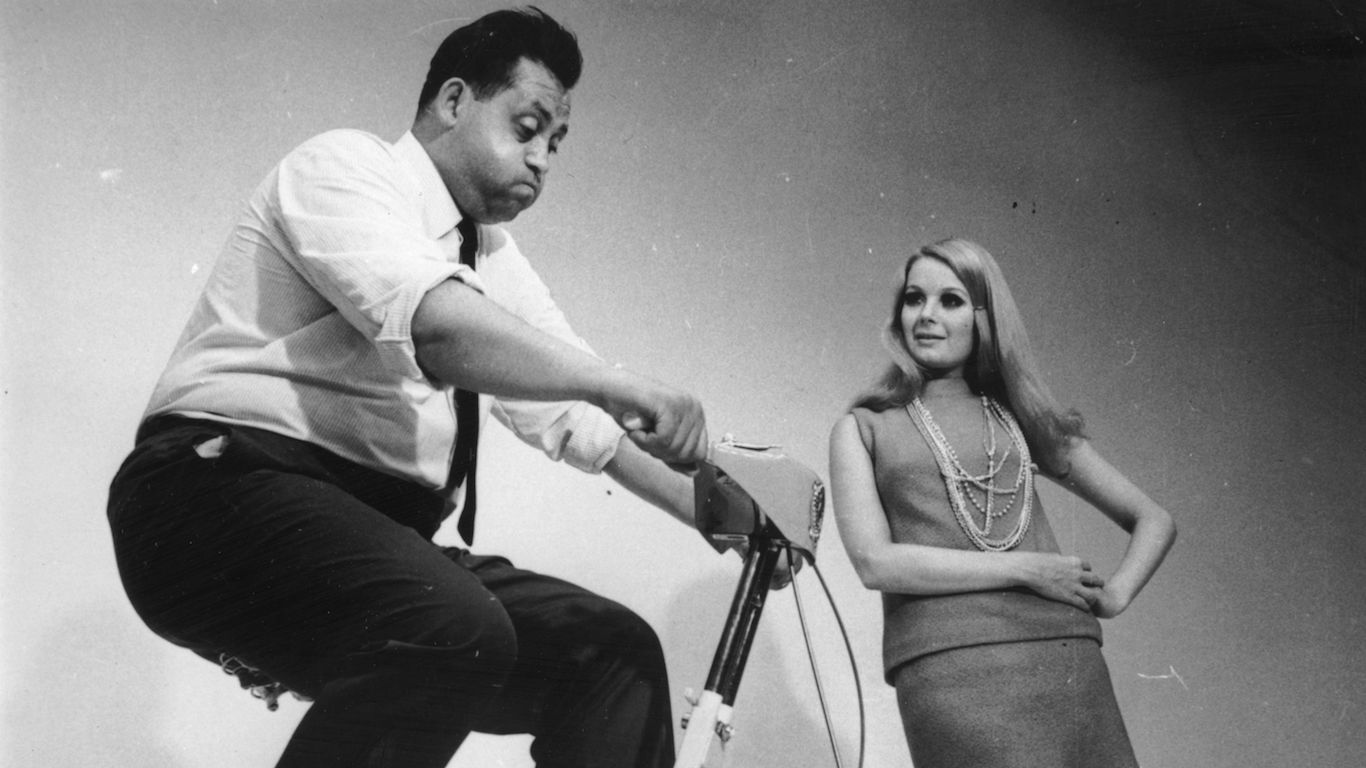 24/7 Wall St.
24/7 Wall St. 24/7 Wall St.
24/7 Wall St. 24/7 Wall St.
24/7 Wall St.
